Mozambique joins list of potential rare earth suppliers in Africa
COP27 – Southern Africa needs to expand & decarbonise its energy system | Further Africa
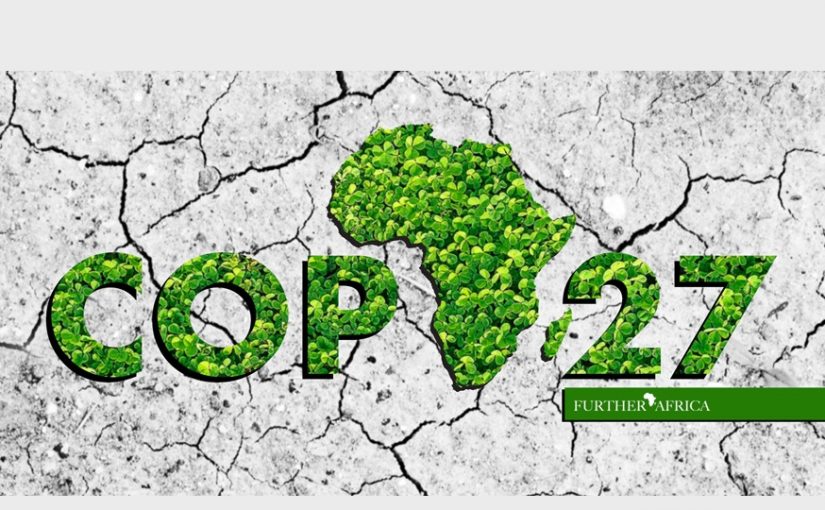
Image: Further Africa
The upcoming edition of the United Nations Climate Change Conference, commonly referred to as COP27 will be the event 27th edition, to be held from 6 to 18 November 2022 in Sharm El Sheikh, Egypt.
COP27 is Africa’s COP and it must address Africa’s climate challenges. The continent contributes about 3% of greenhouse gas emissions but suffers disproportionately from its negative impacts. Africa already loses between US$7 and US$15 billion a year as a result of climate change. If the current scenario doesn’t change, we will be looking at a US$50 billion a year in 2030.
Despite the commitments made by a number of developed countries, Africa still doesn’t have adequate access to the finance resources needed to adapt to climate change. It is estimated by the African Development Bank that by 2030 Africa will need around US$1.6 trillion. One of the regions suffering the most is Southern Africa where nearly half of the households still lack access to electricity and due to increasing industrial growth demand for power is expected to more than double in the next 20 years.
Southern Africa’s power grid is dominated by South Africa which produces over 80% of its electricity from coal and as a consequence, electricity is more than twice as CO2 intensive than the global average.
Energy Transition – the case for hydro energy
Given the pressing situation, a backbone of hydroelectricity is critical to the region achieving its climate ambitions, delivering a low-cost, low-carbon grid, and facilitating greater investment in wind and solar power.
The opportunities are ripped to change this scenario with solar and wind prospects abundant and at lowers costs. Southern Africa has almost unlimited solar and around 46 GW of wind potential, placing it amongst the lowest cost energy in the world.
However, both options are intermittent, and in order to address current and future demand, a firm source of power is needed to align with demand. Hydro is a flexible, low-carbon solution.
Hydro’s flexible operation means output can be rapidly increased or decreased to bridge the gap from intermittent renewables while dams and lakes act as natural “batteries” storing water when it is not needed, a much lower cost than alternative storage solutions.
Hydro power is able to catalyse greater investment in variable renewables. Take Mozambique’s Zambezi River as an example, where given the water volumes and storage potential of the projects along the cascade, each GW of hydro power installed can facilitate around 1 GW of variable renewables. The entire hydro cascade along the Zambezi River could: displace up to 7 GW of coal, spur further investment in solar and wind, drive green industrialization and mitigate large scale annual emissions.
“The entire hydro cascade along the Zambezi River could: displace up to 7 GW of coal, spur further investment in solar and wind, drive green industrialisation and mitigate large scale annual emissions”.
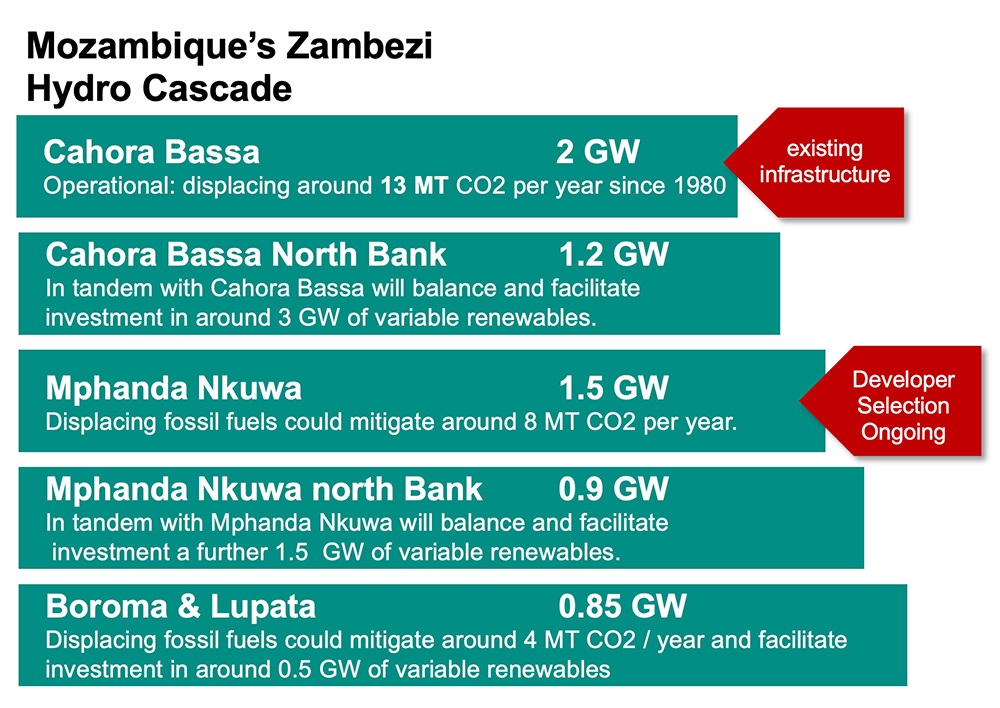
This solution has vast regional climate benefits, namely:
- The displacement of 7 GW of coal by providing a firm product in tandem with variable renewables, and displace planned coal investments in Zambia, Zimbabwe, Malawi and facilitate accelerated decommissioning in South Africa
- The balance and facilitation of around 5 GW of solar and wind across Southern Africa at significantly lower cost than batteries and lower emissions than gas (the most viable alternatives)
- The mitigation of 43 MT of CO2 emissions a year – around 28 MT if this will come from the energy produced by the cascade:13 MT from the already commissioned Cahora Bassa; 15 MT from hydro power due to new investments; and 15 MT from the variable renewables further investment in the cascade will facilitate
- The decarbonisation of global commodity supply chains and drive green industrialisation domestically -The hydro cascade could power green commodity production; Mozambique is already home to Africa’s second largest Aluminium smelter.
During the COP 27, many high-level events will take place and on November 8th, the Presidency of Mozambique will hold a round table to discuss how the country’s clean energy assets could be the engine needed to drive green industrialization in the region. You can follow the event online by register on this link
By Elizabeth Khumalo




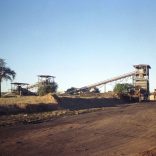

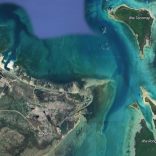

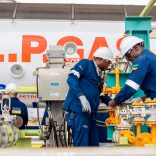


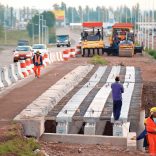
Leave a Reply
Be the First to Comment!
You must be logged in to post a comment.
You must be logged in to post a comment.